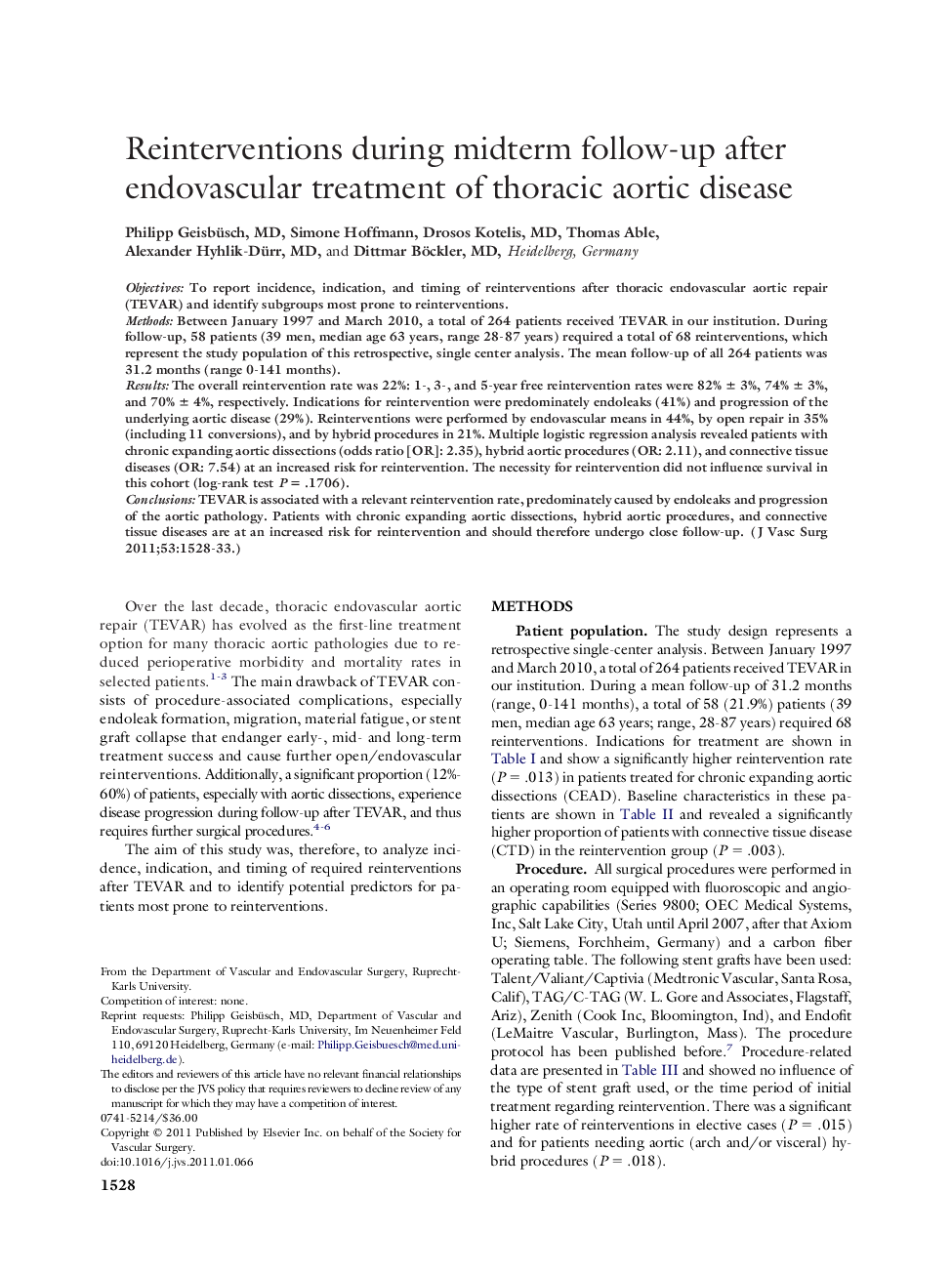| Article ID | Journal | Published Year | Pages | File Type |
|---|---|---|---|---|
| 2992652 | Journal of Vascular Surgery | 2011 | 6 Pages |
ObjectivesTo report incidence, indication, and timing of reinterventions after thoracic endovascular aortic repair (TEVAR) and identify subgroups most prone to reinterventions.MethodsBetween January 1997 and March 2010, a total of 264 patients received TEVAR in our institution. During follow-up, 58 patients (39 men, median age 63 years, range 28-87 years) required a total of 68 reinterventions, which represent the study population of this retrospective, single center analysis. The mean follow-up of all 264 patients was 31.2 months (range 0-141 months).ResultsThe overall reintervention rate was 22%: 1-, 3-, and 5-year free reintervention rates were 82% ± 3%, 74% ± 3%, and 70% ± 4%, respectively. Indications for reintervention were predominately endoleaks (41%) and progression of the underlying aortic disease (29%). Reinterventions were performed by endovascular means in 44%, by open repair in 35% (including 11 conversions), and by hybrid procedures in 21%. Multiple logistic regression analysis revealed patients with chronic expanding aortic dissections (odds ratio [OR]: 2.35), hybrid aortic procedures (OR: 2.11), and connective tissue diseases (OR: 7.54) at an increased risk for reintervention. The necessity for reintervention did not influence survival in this cohort (log-rank test P = .1706).ConclusionsTEVAR is associated with a relevant reintervention rate, predominately caused by endoleaks and progression of the aortic pathology. Patients with chronic expanding aortic dissections, hybrid aortic procedures, and connective tissue diseases are at an increased risk for reintervention and should therefore undergo close follow-up.
